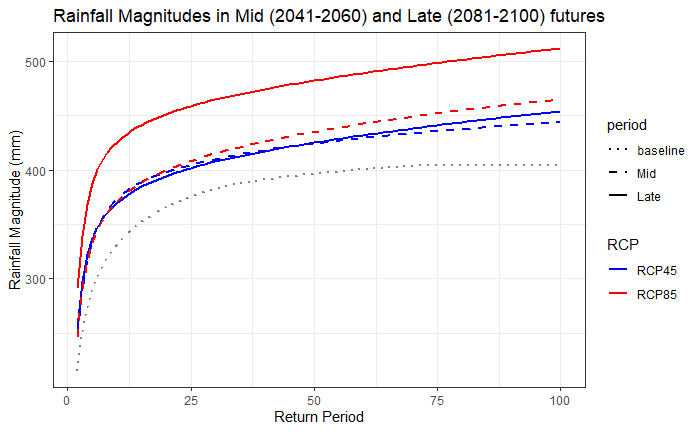
Sed feugiat lorem
Lorem ipsum dolor sit amet, consectetur adipiscing vehicula id nulla dignissim dapibus ultrices.
Learn moreBROWSE SOME OF MY PASSION PROJECTS!
This is my entry for Philippine Space Agency's Data Camp and 5-day Workshop on processing geospatial data using Python, GeoPandas, and Google Colab. My project won as the best proposal. The show-and-tell session can be watched here.
In the Philippines, disasters usually happen due to lack of awareness. One of the reasons that the town leaders mention is "This amount of rainfall never happened!".
That is why some come unprepared when an extreme natural event occurs. Extreme rainfalls are inevitable, but we can extend the analysis just by asking "how frequent is this extreme rainfall?"
Adopting the concepts of return levels and recurrence intervals (or return periods) , we estimate the magnitude of extreme rainfall that happens once every 25 years, once every 50 years, once every 100 years, and so on.
Utilizing the rainfall data extracted from NOAA, probability distribution of annual rainfall maxima is estimated from each of the 55 PAGASA weather stations.
Since not every province have a PAGASA rainfall station, we estimate the rainfall magnitude on ungauged areas using spatial interpolation (kriging).
The final output is the map of the Philippine provinces with the amount of rainfall per return period, that is, the magnitude of rainfall that happens once every 5 years, once every 10 years, once every 25 years, and so on.

tags: Python, GeoPandas, GoogleColab, geospatial, extremevalues, rainfall
This is my term paper for Stat 249 - Nonparametric Modeling, an elective offered in the MS Statistics Curriculum.
In a warming world, wet days will become wetter, and dry days will become drier, that is why it is important to assess the probability of extreme rainfalls under climate change. This paper is a case study on Legazpi City.
In simulating future scenarios, Long Ashton Research Station Weather Generator (LARS-WG) was used to generate daily rainfall under different climate change scenarios: the forcing scenarios RCP 4.5 and RCP 8.5, and in different periods in the 21st century.
I used kernel estimation to fit a nonparametric probability distribution on the annual rainfall maxima to estimate T-year return levels.

tags: Nonparametric, Return Levels, IPCC AR5, Legazpi City
Before you start reading this project, be notified that NOT a forecasting model.
This is just a predictive model initially aimed to fill in missing precipitation data points.
tags: Rmarkdown, rainfall
This is a two-part tutorial for extracting data from NOAA using Python.
LearnWhen I am bored with

Lorem ipsum dolor sit amet, consectetur adipiscing vehicula id nulla dignissim dapibus ultrices.
Learn more
Lorem ipsum dolor sit amet, consectetur adipiscing vehicula id nulla dignissim dapibus ultrices.
Learn more